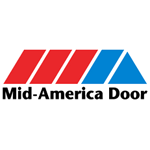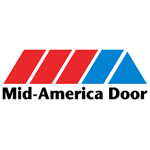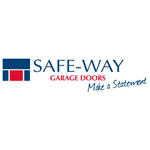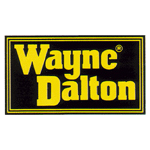Your garage door is more than just a large moving wall it’s one of the most frequently used access points to your home. It contributes to your property’s curb appeal, enhances security, and offers daily convenience. But here’s the problem: many homeowners in New Jersey overlook routine garage door maintenance until something breaks.
Neglecting your garage door can lead to:
- Sudden breakdowns
- Noisy, uneven operation
- Expensive repairs
- Safety risks to people and property
The good news? You don’t have to be a professional to keep your garage door running smoothly. With a few basic tools and a little time, you can handle most maintenance tasks yourself and reduce the need for frequent garage door repair in New Jersey.
🛠️ Ready to get started?
Here are 10 essential DIY garage door maintenance tips that every NJ homeowner should follow to extend the life of their door and prevent costly issues down the road.
1. 🔍 Inspect the Door Regularly
Begin with a thorough visual inspection. Look over the panels, tracks, springs, cables, and hardware. Keep an eye out for:
- Rust, dents, or cracks in the panels
- Bent or misaligned tracks
- Loose screws or bolts
- Fraying cables
- Damaged or worn weatherstripping
Tip: Make this a seasonal habit spring and fall are ideal times. Early detection means cheaper repairs and fewer headaches.
2. ⚖️ Test the Door’s Balance
An unbalanced garage door strains the opener and may cause premature motor failure. Here’s how to test it:
- Disconnect the automatic opener by pulling the manual release cord (usually a red rope).
- Manually lift the door halfway up and let go.
- If it stays in place, the balance is fine. If it rises or falls, the springs may need adjustment.
⚠️ Important: Never attempt to adjust the springs yourself. Call a professional for that part—springs are under extreme tension and can cause serious injury.
3. 🛢️ Lubricate Moving Parts
Friction wears down your garage door system. Keep it running smoothly by applying a silicone-based or lithium-based lubricant to:
- Hinges
- Rollers
- Springs
- Pulleys
- Bearings
Avoid using WD-40 or grease, which can attract dust and grime. A quick lubrication every six months will reduce noise and extend the life of your components.
4. 🧽 Clean the Tracks
Dust, cobwebs, and debris can build up in the tracks, causing the rollers to jerk or squeal. Use a damp cloth or soft brush to clean the tracks thoroughly.
Pro Tip: Do not lubricate the tracks doing so can cause the rollers to slip. Tracks should remain clean and dry to ensure smooth operation.
5. 🚨 Test the Auto-Reverse Feature
This crucial safety mechanism prevents the door from closing on a person, pet, or object.
To test it:
- Place a block of wood or small object in the door’s path.
- Try closing the door. It should immediately reverse upon contact.
- If it doesn’t, adjust the opener’s sensitivity settings or consult the manual.
If your opener is older and lacks this feature, it’s time for an upgrade.
6. 🔩 Tighten Loose Hardware
A garage door opens and closes thousands of times a year. That movement can shake nuts, bolts, and brackets loose.
Use a wrench or screwdriver to tighten:
- Roller brackets
- Track bolts
- Hinge screws
- Mounting plates
Loose hardware is one of the most common causes of squeaky, rattling garage doors.
7. 🌬️ Replace Old Weatherstripping
Weatherstripping keeps out rain, wind, pests, and drafts. If it’s torn, cracked, or stiff, replace it:
- Remove the old strip by sliding it out or unscrewing the retainer.
- Cut a new strip to size.
- Slide or screw it into place.
This small update can make a big difference in your garage’s energy efficiency and comfort.
8. 🔄 Inspect & Replace Worn Rollers
Rollers guide the garage door along the track. When they wear out, your door may:
- Shake during movement
- Make grinding noises
- Get stuck or come off track
To check them:
- Look for cracks, chips, or wobbly movement.
- If needed, remove the roller bracket and replace with nylon rollers for quieter performance.
Caution: If the roller is connected to a torsion spring system, call a pro to avoid injury.
9. 🧵 Check the Cables
Garage door cables handle the tension needed to raise and lower the door safely. Over time, cables can fray, rust, or weaken.
If you spot any damage:
- Do not touch or try to replace them yourself.
- Contact a certified technician cables are under extreme tension and can snap.
Still, regular visual inspections will alert you to call help before they fail.
10. 🔋 Maintain Remotes & Smart Openers
It’s easy to forget your remote until it stops working. To avoid problems:
- Replace batteries every 6–12 months
- Clean dirt from buttons
- Check for signal range issues
- For smart openers, keep firmware updated for security and new features
Lost your remote? Contact our garage door company for a replacement and reprogramming.
🧠 Final Thoughts: Why Garage Door Maintenance Matters
Performing these 10 DIY garage door maintenance tasks just twice a year can:
- Prevent expensive repairs
- Improve door safety and reliability
- Reduce operational noise
- Extend the life of your door and opener
- Help you avoid emergency service calls
But remember: Some issues like spring replacements, cable damage, or opener malfunctions—should be left to professionals.
📞 Need Help? Call New Jersey’s Garage Door Experts
At NJ Overhead Garage Doors, we’ve seen what happens when minor garage door problems are ignored. Our team provides fast, affordable, and professional garage door repair in New Jersey, including emergency service and scheduled maintenance.
📲 Call us today for a free estimate or to schedule service
🌐 Visit: https://njoverheadgaragedoors.com
READ MORE: Garage door last in new jerseys climate













































